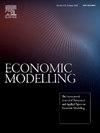通过碳捕获实现脱碳的最佳政策:税收、补贴,还是两者兼而有之?
IF 4.7
2区 经济学
Q1 ECONOMICS
引用次数: 0
摘要
本研究考察了政府如何利用排放税、碳捕获和封存补贴或两者结合来设计脱碳政策。我们开发了一个两阶段模型,其中政府首先选择政策工具以最大化福利,而碳密集型企业则通过选择生产和减排水平来应对。然后,我们使用蒙特卡罗模拟来评估模型参数的同时变化如何影响最优策略。分析结果表明,税收和补贴是战略替代,提高一个要求降低另一个。最优政策组合取决于污染强度和损害程度。高强度支持只征税的制度,而低强度则需要单独补贴或两者混合,这取决于边际损害。这些结果突出表明,决策者需要使政策工具与环境参数保持一致。模拟结果表明,出现了一种只征税的制度,税率与边际损害密切相关。本文章由计算机程序翻译,如有差异,请以英文原文为准。
Optimal policies for decarbonization via carbon capture: Tax, subsidize, or both?
This study examines how governments design decarbonization policies using emission taxes, carbon capture and storage subsidies, or the combination of both. We develop a two-stage model in which the government first chooses policy instruments to maximize welfare, while carbon-intensive firms respond by selecting production and abatement levels. We then use Monte Carlo simulations to assess how simultaneous variation in model parameters affects optimal policies. The analytical results reveal that taxes and subsidies are strategic substitutes—raising one calls for reducing the other. The optimal policy mix depends on pollution intensity and damage. High intensity favors a tax-only regime, whereas low intensity calls for subsidies alone or a mix of both, depending on marginal damage. These results highlight the need for policymakers to align policy instruments with environmental parameters. The simulation results show the emergence of a tax-only regime where tax rates are closely tied to marginal damages.
求助全文
通过发布文献求助,成功后即可免费获取论文全文。
去求助
来源期刊

Economic Modelling
ECONOMICS-
CiteScore
8.00
自引率
10.60%
发文量
295
期刊介绍:
Economic Modelling fills a major gap in the economics literature, providing a single source of both theoretical and applied papers on economic modelling. The journal prime objective is to provide an international review of the state-of-the-art in economic modelling. Economic Modelling publishes the complete versions of many large-scale models of industrially advanced economies which have been developed for policy analysis. Examples are the Bank of England Model and the US Federal Reserve Board Model which had hitherto been unpublished. As individual models are revised and updated, the journal publishes subsequent papers dealing with these revisions, so keeping its readers as up to date as possible.
 求助内容:
求助内容: 应助结果提醒方式:
应助结果提醒方式:


